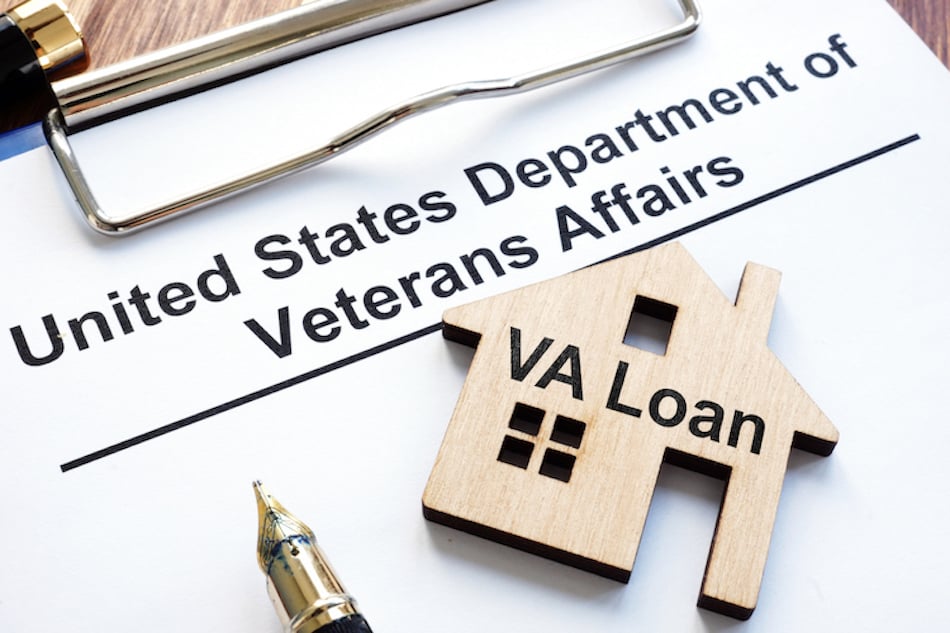There are attractive features to a VA loan, including no down payment requirement and no minimum credit score. While loan programs from the VA are designed for borrowers purchasing a primary residence, in some cases a VA loan can be used for investment property.
In this article, we’ll explain how to qualify for a VA loan, the types of investment property that may be financed with a VA loan, and the potential advantages of selling a home with a VA loan.
Key takeaways
- The U.S. Department of Veterans Affairs does not originate, but backs VA home loans.
- Benefits of using a VA loan for investment property include no down payment and no minimum credit score, although the issuing lender may impose credit score requirements.
- A VA loan can be used to finance the purchase of a single-family home or a multifamily property with 2-4 units.
- When a home is sold, a VA loan may be assumed by a qualified borrower, even if the borrower is not a Veteran.
What is a VA loan?
A VA loan is issued by a lender and backed by the U.S. Department of Veterans Affairs to help Veterans, service members, and their surviving spouses purchase, improve, or refinance a home.
Advantages of using a VA loan to purchase a home include 0% down payment for 100% financing.
Can a VA loan be used for an investment property?
Because VA loans have fewer restrictions than conventional loans, many borrowers wonder if a VA loan can be used by real estate investors. In some cases, it may be possible to use a VA loan for an investment property, as long as all of the rules are followed.
Rule #1: Military service
A borrower must be a Veteran or an active service member that meets certain eligibility requirements based on service.. National Guard and Reserve members may qualify for a VA loan, as well as surviving spouses of a Veteran or of a Veteran missing in action or held as a prisoner of war.
Rule #2: Primary residence
Property must be occupied by a borrower as a primary residence in order to qualify for a VA loan. However, a borrower may be able to “house hack” by renting out a room in a single-family home, a detached apartment on the same lot, or non-owner occupied units in a multifamily property.
Rule #3: One to four unit property
A VA loan may be used to purchase a single-family home or duplex, triplex, or fourplex multifamily property. A single-family home may also qualify for VA financing if there is a separate rental unit on the same lot, such as a free standing garage converted into a studio apartment.
VA investment property loans types
The Veterans Administration offers various types of VA loan programs, including:
Native American direct loans
Veterans that are, or are married to a spouse that is, Native American may be eligible for a Native American Direct Loan (NADL) program to buy, build, or improve a home on federal trust land.
VA purchase mortgage loans
VA-backed home loans are originated by a traditional lender and backed by the Veterans Administration. A borrower applying for a VA-backed loan will need to meet a lender’s requirements to receive a loan, such as minimum credit score and income level.
Eligibility requirements for a VA loan
Before applying for a VA loan a borrower must obtain a Certificate of Eligibility (COE) which shows a lender that a borrower is qualified for a VA loan based on service history and duty status.
Borrowers eligible for a VA loan include:
- Veteran
- Service member
- Surviving spouse of a Veteran who died on active duty
- Spouse of a Veteran who is missing in action or a prisoner of war
- Current or former activated National Guard or Reserve member
- Current of former National Guard or Reserve member who has never been activated
Service requirements for Veterans and service members on active duty vary based on the service date. In general, the amount of service time ranges from between 90 days to 24 continuous months, or less if a Veteran was discharged for a service-connected disability.
The VA website has a chart of COE service requirements for Veterans and service members on active duty, and for National Guard and Reserve members.
How a borrower can use rental income to qualify for a VA loan
A VA loan can be used to finance the purchase of an owner-occupied single-family home or a multifamily property with 2-4 units, provided that one of the units is used by the borrower as a primary residence.
Income from a detached rental unit in a single-family home – such as a free standing garage converted into an apartment - or units in a multifamily property may help a borrower to meet a lender’s income requirements to qualify for a VA loan. As a rule of thumb, most lenders will credit 75% of the rental income from a property being financed toward a borrower’s total income.
For example, assume a borrower with an annual income of $48,000 is applying for a VA loan to purchase a single-family rental property with a free standing rental unit.
If the rental unit has a history of generating $1,100 per month in gross rental income, a lender may count 75% of that amount – $825 per month or $9,900 per year - toward a borrower’s total annual income. So, instead of using an income of $48,000 to qualify, a borrower can now use an income of $57,900 to improve the debt-to-income (DTI) ratio.
Lenders may also have additional requirements for a rental property loan.
A lender will generally require that any rental income claimed be verifiable by bank statements that show the amount of rent received each month, or that an appraiser determine the fair market rent for the property. A borrower may also be required to keep up to 6 months of cash reserves to cover mortgage payments and property operating expenses.

Can a borrower move and still keep a VA loan?
Service members on active duty are often transferred to another state or country. But moving doesn’t necessarily mean a borrower with a VA loan has to sell a home, although that is one option.
Keep the home and rent it out
If a Veteran decides to relocate or an active service member is transferred, one option is to keep the home and use it as a rental property. Renting a single-family home may be a good way to begin building long-term wealth with real estate, and to generate some rental income each year.
However, it can be difficult to self-manage a rental property when an owner lives in another place. That’s why many people choose to hire a local professional property manager to take care of the tenant and the property while the owner is away.
Note that before keeping a home and renting it out, most loans backed by the VA require a borrower to live in the home as a primary residence for at least 12 months.
Sell the home to an owner-occupant
If an owner with a VA loan decides not to rent the home out, another option is to sell the property to a buyer looking for a primary residence. Some sellers hire a real estate agent to list the property on the local MLS. Other owners may decide to list the home for sale as a FSBO (for sale by owner) on websites such as Zillow or FSBO.com.
However, if a home with a VA loan is being used as a rental property, advertising the home to the general public may not be the best option.
A tenant may be bothered by showings from real estate agents and open houses, or be worried about having a new landlord. In the worst case scenario, a tenant might decide to break the lease and leave, or even accuse the landlord of violating the tenant’s rights.
Sell the home to a investor
The demand for rental property is currently growing by leaps and bounds.
That’s why listing a home for sale on the Roofstock Marketplace can be a good choice if a home with a VA loan is rented to a tenant, or if the home would make a good rental property, even if it isn’t occupied by a tenant.
The sales commission is just 3% or $2,500, whichever is greater, and a home being sold with a VA loan can be a attractive for investors. Unlike most conventional loans, a VA loan may be assumable even if the buyer is not a Veteran or active service member.
After listing a property online, the team at Roofstock performs up-front due diligence, such as securing a title report. Offers are negotiated completely online, Roofstock coordinates the entire closing process once an offer is accepted.
Closing thoughts
While VA loans are generally designed for borrowers wanting to finance the purchase of a primary residence, there are a couple of exceptions to the rule.
A single-family home with a separate rental unit may qualify for VA financing, or a borrower may house hack by renting out an extra bedroom. Small multifamily properties with 2-4 units may also qualify for a VA loan, provided that one of the units is used by a borrower as a primary residence for at least the first year.
Even if a borrower is an active duty service member, using a VA loan for real estate investments can be a good way to begin building a rental property portfolio while simultaneously serving the country.










